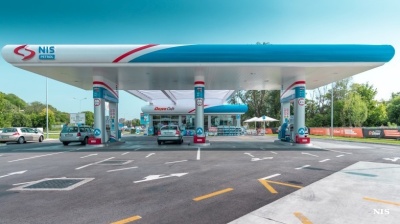The Hungarian National Bank (MNB) kept its key interest rates unchanged at 6.5% on July 22, maintaining a tight monetary policy stance amid persistent inflation risks and heightened global uncertainties. The decision was in line with broad market expectations and did not come as a surprise.
The central bank has not altered the base rate since September 2023, and its current forward guidance continues to stress patience, predictability, and the need for a sustained disinflation trend before any loosening can begin.
The overnight deposit rate and lending rate were also left unchanged, at 5.50% and 7.50%, respectively.
Speaking after the rate decision, MNB Governor Mihaly Varga said “the fight against inflation is not over,” adding that anchored inflation expectations are essential to achieving lasting price stability. The current strict monetary conditions remain warranted given the elevated inflation environment and ongoing geopolitical and trade tensions, he added.
Headline inflation rose to 4.6% in June, one of the highest in the EU, driven by continued strong price pressures in food, services and regulated energy. While profit margin caps and other voluntary price restrictions by banks and telcos have curbed overall inflation, consumer inflation expectations remain high despite some easing in corporate sentiment.
The central bank expects inflation to stay above the 2-4% tolerance band throughout the year, only gradually falling back within range in early 2026 and reaching the 3% target by early 2027, he said after the meeting in a press conference.
In the latest quarterly macroeconomic report released a month ago, it forecasts average annual inflation of 4.7% for 2025, 3.7% for 2026 and 3.0% for 2027. In the June forecast, the MNB projected inflation of 4.5-5.1% in 2025, 2.9-3.9% in 2026 and 2.5%-3.5% in 2027. The central bank slashed its 2025 growth forecast from 1.9-2.9% in March to just 0.8% and expects GDP to accelerate to 2.8%, below the 3.7-4.7% target four months earlier.
On the broader economy, Varga noted that GDP stagnated in Q1. While household consumption showed stable growth, investment remained weak and external demand for industrial goods was dampened by global market uncertainty. High-frequency data suggests subdued activity in the second quarter as well. However, he expects both domestic and external drivers to support a recovery from 2026.
The MNB also announced that, starting August 1, the mandatory reserve ratio for banks will be lowered from 10% to 8%, a technical adjustment intended to offset the liquidity impact of expiring monetary programmes. Varga stressed that the move has a neutral effect and does not signal a policy shift.
Market participants are currently pricing in the possibility of one 25bp cut by year-end. However, analysts warn that any such move will hinge on sustained progress in inflation expectations and a more accommodative stance from the Fed and the European Central Bank.
“The MNB’s communication remains focused on anchoring expectations and ensuring real interest rates stay in positive territory,” said analysts at Erste Bank. “While the reserve ratio cut may hint at technical fine-tuning, there is no pivot in the policy stance yet.”
The MNB left its forward guidance unchanged, saying it remains committed to achieving its inflation target on a sustainable basis. Given persistent risks stemming from the inflation outlook, trade policy uncertainties and geopolitical tensions, a cautious and patient monetary policy stance remains essential. In the Council’s view, tight monetary conditions continue to be justified.
When asked about Hungary’s euro adoption prospects, Vargas said it is essential to meet all convergence criteria before any timeline can be established. On a separate note, he confirmed that the MNB has launched a review to determine whether Hungary’s gold reserves should be increased in the coming years.
News

Serbia’s NIS posts 9-month net loss as US sanctions weigh on performance
NIS, majority-owned by Russia’s Gazprom Group, said it had operated in “extremely complex circumstances” after sanctions were announced by the US Treasury Department.

Nigeria's Heirs Energies' CFO on powering growth via sustainable, indigenous-led development
NewsBase speaks exclusively to Samuel O. Nwanze, Executive Director and Chief Financial Officer of Nigerian indigenous integrated oil and gas company Heirs Energies.

Brazil's Lula "horrified" as Rio police raid death toll reaches at least 130
Brazilian President Luiz Inácio Lula da Silva expressed shock at the fatalities from a massive police operation targeting Rio drug gangs that left scores dead, while residents and rights advocates accused authorities of summary executions.

Nigeria's NNPCL weighs technical equity partnerships to revive idle state-owned refineries
NNPCL is reviewing options to bring the Port Harcourt, Warri and Kaduna refineries back into meaningful operation, possibly by bringing in technical equity partners to upgrade or repurpose units.




